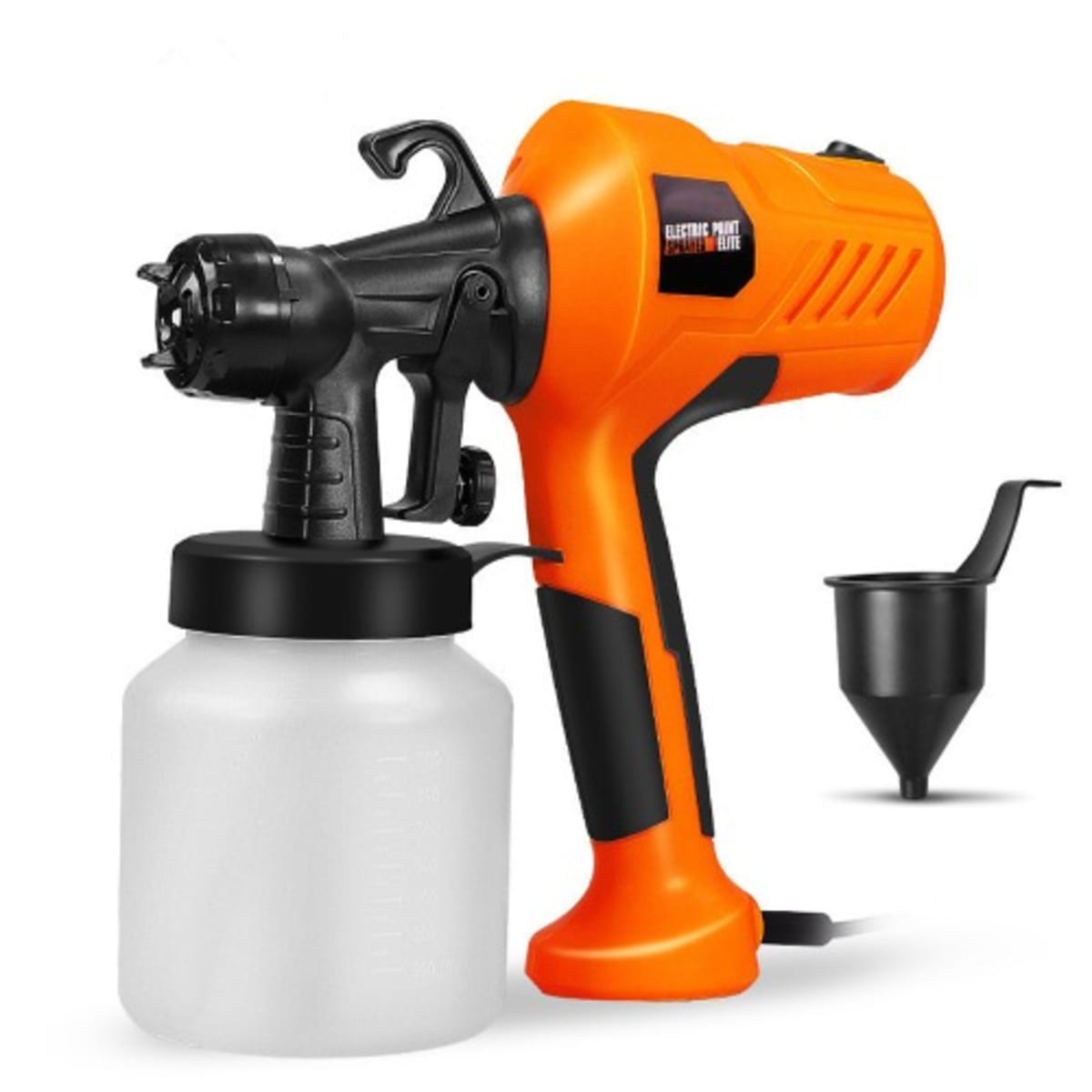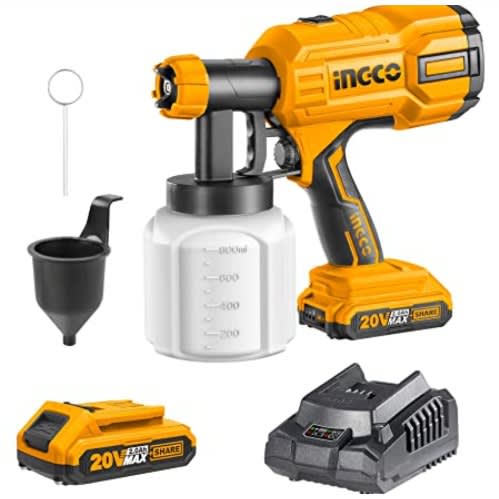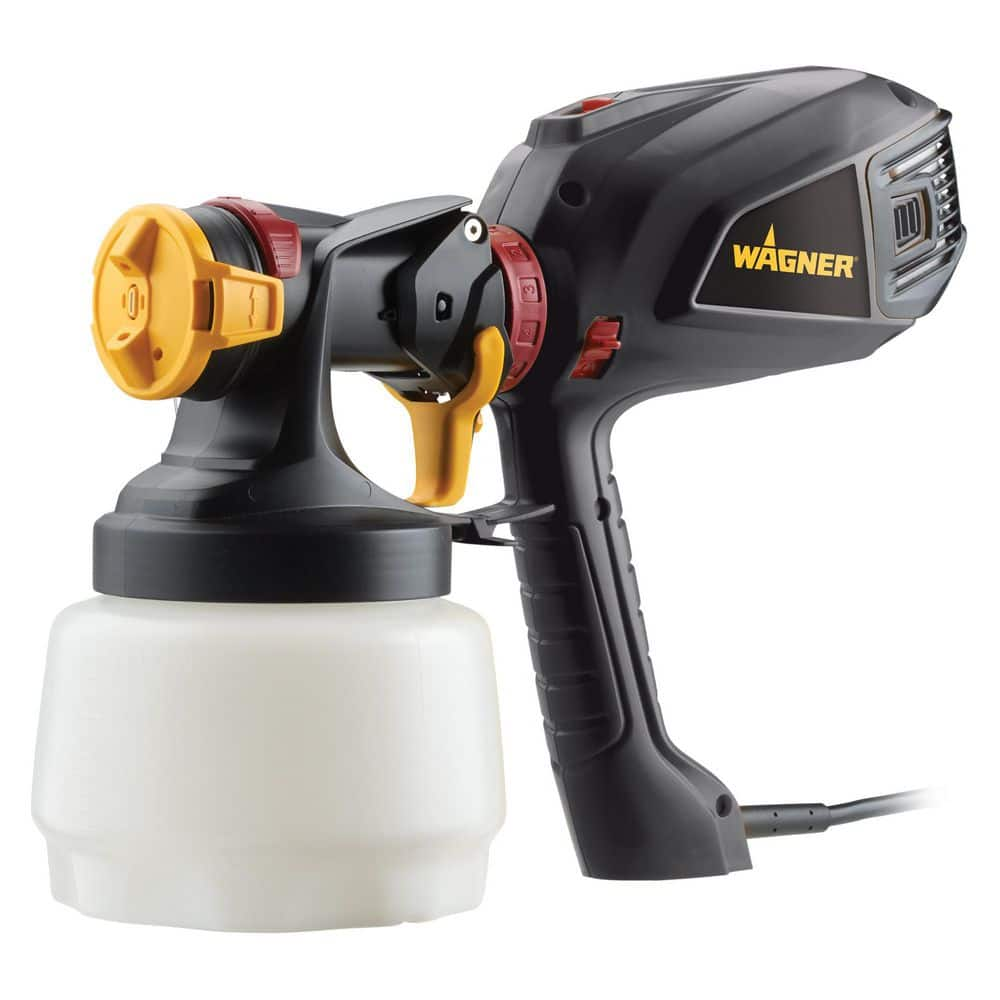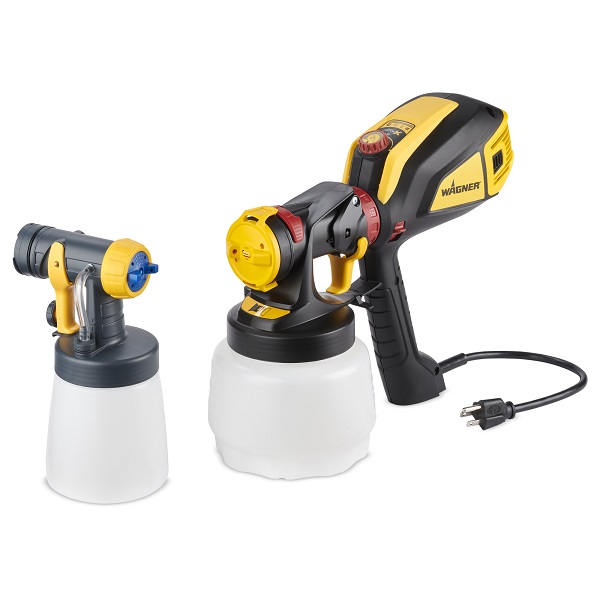Revolutionizing Painting: The Evolution and Efficiency of Paint Sprayers
Paint sprayers, also known as spray guns, are advanced painting tools that have revolutionized the traditional methods of applying paint. These devices utilize various technologies to atomize paint into fine droplets, which are then propelled onto surfaces for an even and smooth finish. They come in different types such as airless, HVLP, and pneumatic, each tailored for specific applications. Paint sprayers offer efficiency, covering larger surface areas in less time compared to traditional brushes or rollers. They are versatile, suitable for residential, commercial, and industrial projects, and are favored for their ability to reduce overspray, minimizing paint wastage. Ideal for providing professional results, paint sprayers have become an essential tool for both professionals and DIY enthusiasts, enhancing the speed and quality of painting tasks.
Types of Paint Sprayers.

The world of painting has witnessed a significant transformation over the years. From the traditional brush and roller methods to the modern, efficient, and precise paint sprayers, the evolution of painting tools has revolutionized the industry. Paint sprayers have become essential in both commercial and residential applications due to their ability to provide a smoother finish, faster application, and efficient coverage. This article delves into the world of paint sprayers, exploring their types, working mechanisms, advantages, and applications.
Evolution of Paint Sprayers
Paint sprayers, also known as spray guns, have a rich history that dates back to the late 19th century when the first hand-operated atomizer was patented. Since then, the technology has significantly advanced, leading to the development of various types of paint sprayers. These can be categorized into airless, HVLP (High Volume Low Pressure), and pneumatic paint sprayers.
Types of Paint Sprayers
- Airless Paint Sprayers: These are highly efficient machines that pump paint at high pressure, forcing it through a small opening at the tip of the gun. They are perfect for large surface areas and outdoor projects, providing a smooth finish and even coverage.
- HVLP Paint Sprayers: High Volume Low Pressure sprayers are known for their low overspray and are ideal for detailed work. They use a high volume of air to break up the paint, resulting in a softer spray.
- Pneumatic Paint Sprayers: These sprayers are powered by an air compressor and are commonly used for automotive applications or in areas where a fine finish is crucial.
Benefits of Paint Sprayers
Paint sprayers offer several benefits that make them a preferred choice for various painting projects, both for professionals and DIY enthusiasts. Some of the key advantages include:
- Efficiency: Paint sprayers are incredibly efficient tools that can cover large surface areas in a fraction of the time it takes with traditional methods like brushes or rollers. They expedite the painting process, leading to increased productivity and time savings.
- Even Application: They provide a smooth, even finish. The fine mist of paint produced by sprayers results in a more uniform coating, which is especially advantageous for larger surfaces, such as walls or ceilings.
- Versatility: Paint sprayers are versatile and can be used on a wide range of surfaces and materials, including walls, furniture, fences, cabinets, and even automobiles. Their adaptability makes them suitable for various project requirements.
- Saves Paint and Reduces Waste: When used properly, paint sprayers can minimize overspray, thus reducing paint wastage. This not only saves money but also contributes to a more environmentally friendly approach to painting.
- Time-Saving: Due to their speed and efficiency, using a paint sprayer can significantly reduce the time required for painting tasks. This makes them a practical choice for professionals working on large projects or for anyone seeking to complete painting jobs quickly.
- Professional Finish: Paint sprayers are known for providing a professional-quality finish. They deliver a smoother and more even application compared to traditional methods, resulting in a high-quality appearance.
- Adaptability to Various Paint Types: They can handle different types of paint, including latex, oil-based, stains, varnishes, and lacquers. This flexibility allows for the use of different paint materials without significant adjustments.
- Coverage of Hard-to-Reach Areas: Sprayers are effective at reaching corners, crevices, and other difficult-to-access areas that might be challenging with brushes or rollers. This makes them suitable for detailed work and complex surfaces.

Working Mechanism
Paint sprayers work on a simple principle - they atomize paint into tiny droplets and propel these droplets onto the surface being painted. This is achieved through the use of different technologies, but the basic components include a motor or compressor, a hose, and a spraying nozzle. The paint is pressurized and forced through the nozzle, creating a fine mist that coats the surface evenly.
Frequently Asked Questions (FAQ)
What does a paint sprayer do?
A paint sprayer atomizes paint into tiny droplets and propels them onto surfaces. It offers an efficient way to apply paint evenly, covering large areas in less time compared to traditional methods like brushes or rollers.
Are paint sprayers worth it?
Paint sprayers are worth it for many reasons. They offer efficiency, providing faster coverage of larger surfaces. They also tend to produce a smoother and more even finish compared to traditional methods. They can be especially valuable for professionals handling large projects or individuals seeking a professional finish in their DIY work.
Can a paint sprayer be used on walls?
Yes, paint sprayers can be used on walls. They are suitable for walls and various surfaces in both residential and commercial settings, providing an efficient and even coat of paint.
What is the best paint sprayer to use in the home?
The best paint sprayer for home use depends on the specific needs of the project. For smaller home projects, an HVLP (High Volume Low Pressure) paint sprayer might be suitable as it offers a finer finish and is more appropriate for detail work. However, for larger surfaces, an airless paint sprayer might be more efficient due to its ability to cover larger areas quickly.
Which is better, roller or sprayer?
The choice between a roller and a sprayer depends on the project. Paint sprayers are faster and more efficient for covering larger areas and offer a smoother finish. However, rollers might be more precise and controllable, making them suitable for smaller areas or detail work.
Determining whether a roller or a sprayer is better largely depends on the specifics of the project, the desired finish, and individual preferences. Each tool has its own set of advantages and limitations:
Advantages of a Roller:
- Control and Precision: Rollers offer greater control, especially in terms of pressure applied and direction. This control is beneficial for edges, corners, and smaller areas, allowing for precision in application.
- Ease of Use: They are generally easier for beginners to use effectively. There is no overspray concern, and they do not require extensive setup or cleanup like sprayers.
- No Equipment Dependency: Rollers don’t rely on electricity, compressors, or additional equipment, making them a simpler tool that is more readily available.
- Versatility in Paint Types: Rollers are suitable for various types of paint, making them adaptable to different painting projects.
Advantages of a Sprayer:
- Efficiency and Speed: Sprayers are significantly faster for covering larger surface areas. They offer quick and even application, reducing the time needed for painting.
- Smooth, Even Finish: Sprayers produce a fine mist of paint, resulting in a smooth and consistent finish. This finish is difficult to replicate with a roller, especially on larger surfaces.
- Versatility and Accessibility: Sprayers can reach and cover areas that might be challenging for rollers, such as irregular surfaces or hard-to-reach spots.
Choosing Between Roller and Sprayer:
- Size of Project: For larger projects or wide surfaces, a sprayer might be more efficient. For smaller or intricate areas, a roller can provide better control and precision.
- Desired Finish: If a smooth, even finish is crucial, a sprayer might be preferred. For textured or handcrafted finishes, a roller may be more suitable.
- Skill Level: Rollers are generally more user-friendly, while sprayers may require some practice and technique to achieve the best results.

Is a spray gun better than a brush?
Spray guns can be more efficient than brushes in terms of speed and coverage, especially for larger projects. They offer a more even finish and can reach areas that might be difficult with a brush. However, the choice between a spray gun and a brush depends on the specific project requirements, as brushes might offer more precision and control, particularly for detailed work.
Whether a spray gun is better than a brush depends on the specific context of the painting project and the desired outcomes. Each tool has its own set of advantages and limitations. Here's a comparison:
Spray Gun Advantages:
- Efficiency and Speed: Spray guns are typically faster than brushes. They can cover larger surface areas in less time, making them more efficient for larger projects.
- Even Application: Spray guns produce a fine mist of paint that results in a smooth and even finish. This can be challenging to achieve consistently with a brush.
- Versatility: They can handle various surfaces, from walls to furniture, and are suitable for both indoor and outdoor projects.
- Precision in Hard-to-Reach Areas: Spray guns are effective in reaching corners, edges, and other difficult-to-access areas, which can be challenging with a brush.
Brush Advantages:
- Control and Precision: Brushes offer more control, making them ideal for detailed work and intricate surfaces. They allow for precise application and are especially useful for smaller areas.
- No Overspray: Brushes do not produce overspray, so there is minimal waste and environmental impact compared to spray guns.
- Less Equipment and Maintenance: Brushes require less equipment and maintenance. They are easy to clean and don't rely on power sources, compressors, or other accessories.
Choosing Between Spray Gun and Brush:
- Size of Project: For large surface areas and exterior work, a spray gun is more efficient. For smaller, detailed work or areas that require precision, a brush may be more suitable.
- Finish Desired: If a smooth, even finish is essential, a spray gun might be the better choice. For texturized or handcrafted finishes, a brush might be preferred.
- Skill and Experience: Spray guns require some practice to achieve optimal results. Brushes are more straightforward and do not necessarily require specialized skills.
Uses of Paint Sprayers
Paint sprayers are versatile tools used across various industries and for numerous applications. Their adaptability and efficiency make them essential for different painting projects. Some of the primary uses of paint sprayers include:
- Residential Painting: Ideal for interior and exterior walls, ceilings, and furniture in homes. They provide a professional finish and are efficient for covering large surface areas quickly.
- Commercial Projects: Used in larger-scale projects such as painting buildings, warehouses, and offices. They offer speed and efficiency, making them valuable for commercial applications.
- Automotive Industry: Automotive manufacturers and body shops use paint sprayers for applying paint on vehicles. These tools are crucial for achieving the precision and professional finish required in automotive painting.
- Furniture Refinishing: Perfect for refinishing or repainting furniture pieces, such as chairs, tables, cabinets, and other wooden surfaces. They ensure an even and smooth coating.
- Cabinet Painting: Often used for painting kitchen cabinets and other cabinetry. Sprayers allow for a more uniform finish and access to corners and intricate details.
- Fence and Deck Painting: Efficient for coating fences, decks, and outdoor structures, providing a consistent finish and effective coverage.
- Artistic Projects: Artists and craftsmen use paint sprayers for creative projects, such as murals, artwork, or custom designs, due to their ability to cover large areas with various paint types.
- Industrial Equipment Painting: Industries use sprayers for painting machinery, equipment, and industrial structures. They help achieve an even and protective coat on these large items.
- Boat and Marine Painting: Paint sprayers are useful for applying paint on boats and other marine vessels, ensuring a smooth finish and protective coating.
- DIY Projects: Homeowners and DIY enthusiasts utilize paint sprayers for smaller projects such as painting doors, trims, and other smaller surfaces, offering a quicker and more professional-looking finish compared to traditional methods.

Advantages of Paint Sprayers
- Efficiency: Paint sprayers are incredibly efficient, covering large surface areas quickly. They can complete tasks much faster than traditional painting methods like brushes or rollers.
- Even Application: They provide a smooth and even finish. The fine mist of paint produced by sprayers results in a more uniform coating, particularly useful for larger surfaces.
- Versatility: Paint sprayers are versatile tools suitable for various surfaces and materials, including walls, furniture, fences, cabinets, and even automobiles. They adapt well to different project requirements.
- Reduced Wastage: With the right technique, paint sprayers can minimize overspray, reducing paint wastage. This can save money in the long run.
- Time-Saving: Due to their speed and efficiency, using a paint sprayer can save a significant amount of time, making them an excellent choice for professionals and DIY enthusiasts alike.
Disadvantages of Paint Sprayers
- Learning Curve: Paint sprayers have a learning curve. Achieving the best results requires practice and skill to handle the sprayer effectively.
- Overspray: Sprayers can produce overspray, leading to wastage and potentially requiring more masking and covering of surrounding areas to protect them from paint mist.
- Maintenance: Paint sprayers require regular cleaning and maintenance. Proper cleaning after each use is essential to prevent clogging and ensure the sprayer's longevity.
- Initial Cost: Quality paint sprayers can be more expensive than traditional painting tools like brushes and rollers. This initial investment might be a deterrent for some users.
- Not Ideal for Small Areas: For very small areas or detailed work, paint sprayers might be less precise than a brush or roller, which could lead to wastage or mess.
Applications
Paint sprayers have diverse applications across different industries and for various projects:
- Residential Painting: They are commonly used for painting walls, ceilings, and furniture in homes, providing a professional finish.
- Commercial and Industrial Use: In larger-scale projects such as painting buildings, warehouses, and industrial equipment, sprayers are indispensable due to their efficiency.
- Automotive Industry: Car manufacturers and auto body shops use paint sprayers for applying paint on vehicles due to the precision and fine finish they offer.
Purpose of Paint Sprayers
The primary purpose of paint sprayers is to efficiently and effectively apply paint to surfaces. These tools are designed to atomize paint into fine particles and then spray these particles onto various surfaces for a smooth and even coat of paint. The key purposes and functions of paint sprayers include:
- Efficient Coating Application: Paint sprayers cover surfaces rapidly and evenly, significantly reducing the time and effort required for painting tasks, especially on larger areas.
- Uniform Finish: They create a uniform and professional finish due to their ability to deliver a fine mist of paint, eliminating brush marks and roller texture, which can occur with traditional methods.
- Versatility: Paint sprayers can be used on various surfaces such as walls, ceilings, furniture, fences, cabinets, and even automobiles. They can adapt to different materials and textures, providing versatility in painting applications.
- Reach and Precision: Sprayers are effective in reaching intricate or hard-to-access areas, corners, and crevices, allowing for precision and detailed work that might be challenging with brushes or rollers.
- Time and Labor-Saving: They expedite painting projects, saving time and reducing the labor required for painting tasks, making them ideal for both professionals and DIY enthusiasts.
- Adaptability to Paint Types: Paint sprayers are suitable for various types of paint, including latex, oil-based, stains, varnishes, and lacquers, allowing users to work with different paint materials.
- Reduced Overspray and Waste: With the correct technique, sprayers can minimize overspray, reducing paint wastage and saving on materials and costs.
- Consistency and Professional Quality: Paint sprayers offer consistent and high-quality finishes, often achieving results that are smoother and more professional-looking compared to traditional painting methods.

Environmental Impact on Paint Sprayers
The use of paint sprayers can have both positive and negative environmental impacts, depending on various factors such as the type of sprayer, the paints used, and the application methods. Here are some points regarding their environmental impact:
Positive Environmental Impacts:
- Reduction in Paint Wastage: When used correctly, paint sprayers can minimize overspray and wastage of paint, thus reducing the amount of paint used and minimizing environmental impact in terms of excess material.
- Lower VOC Emissions: Some modern paint sprayers and paint formulations produce lower levels of volatile organic compounds (VOCs). This decrease in VOC emissions contributes to improved air quality and reduced environmental pollution.
- Efficiency and Energy Savings: The speed and efficiency of paint sprayers can save energy and reduce the overall environmental impact by shortening project duration, thus cutting down on the use of resources like electricity or gas for longer periods.
Negative Environmental Impacts:
- Potential Overspray and Pollution: If not used properly, paint sprayers can produce overspray, leading to the dispersion of paint particles into the air and surrounding environment, potentially causing pollution.
- Waste from Cleaning and Maintenance: Regular cleaning and maintenance of paint sprayers can generate waste, particularly when cleaning solutions and disposal methods are not environmentally friendly.
- Choice of Paint and Chemicals: Some paints used in conjunction with paint sprayers might contain harmful chemicals or compounds that can be detrimental to the environment when released, either during application or disposal.
- Energy Consumption: Although paint sprayers can save time and overall energy consumption, the use of powered paint sprayers (electric or pneumatic) does consume energy during operation.
To mitigate the negative environmental impacts of paint sprayers, here are a few practices:
- Choose Low-VOC Paints: Opt for paints with low or zero VOCs to minimize harmful emissions into the environment.
- Proper Usage and Technique: Training and using the right techniques can significantly reduce overspray, minimizing environmental pollution.
- Waste Management: Properly dispose of paint materials and cleaning solutions according to local regulations and in an environmentally responsible manner.
The invention and evolution of paint sprayers have undeniably transformed the painting industry. Their efficiency, versatility, and ability to produce a smooth finish have made them an indispensable tool for both professionals and DIY enthusiasts. As technology continues to advance, we can expect further improvements in paint sprayer design, making them even more user-friendly and efficient. Whether it's a small home project or a large industrial undertaking, the paint sprayer stands as a symbol of innovation, simplifying and enhancing the art of painting.



